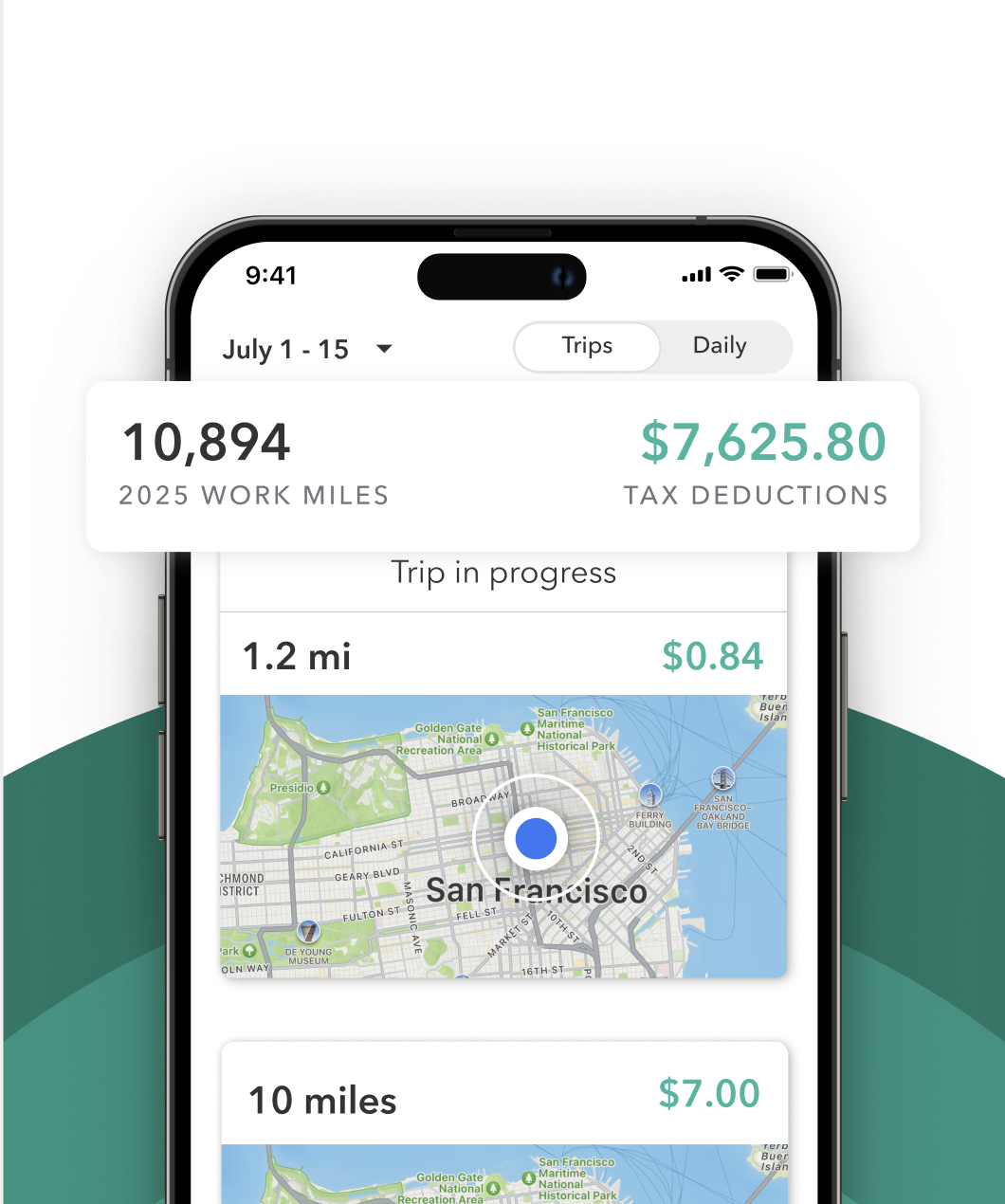If you work through Thumbtack as an independent contractor, your vehicle is one of your most valuable tax tools. Every business mile you drive can lower your taxable income and reduce what you owe at tax time. The key is knowing which miles count, how to track them, and how to choose the right deduction method.
This guide breaks down everything Thumbtack pros need to know about mileage deductions, whether you clean homes, take photos, repair appliances, coach clients, or travel to job sites.
Why mileage tracking matters for Thumbtack pros
Most Thumbtack pros drive as part of their work. When you travel to customer homes, pick up supplies, or move between job sites, the IRS lets you deduct the cost of that driving. You can do this in one of two ways: the standard mileage rate or the actual expenses method.
Most Thumbtack pros choose the IRS mileage rate because it is simple and usually gives a strong deduction, especially for people who drive often and do not have high repair or vehicle costs. No matter which method you use, accurate mileage tracking is the only way to claim the full deduction you deserve.
What counts as business mileage for Thumbtack
The IRS only allows “ordinary and necessary” miles for your business. The good news is that many trips qualify.
Deductible Thumbtack business miles
These trips usually count:
- Driving to a customer’s home or job site
- Traveling from one job to the next
- Picking up supplies, tools, or materials
- Meeting a client for a consultation
- Driving to training or classes that help your business
- Driving to a store to replace damaged or missing materials
Miles you cannot deduct
These trips do not count:
- Driving from your home to your first job of the day, which is considered a commute
- Driving home after your last job
- Personal errands
- Trips unrelated to your Thumbtack work
The only exception is if your home qualifies as your primary place of business, therefore getting the home office deduction. Most people do not meet that requirement.
The standard mileage rate
The IRS mileage rate is the most common choice for Thumbtack pros.
What it is
A fixed cents-per-mile rate set by the IRS each year. This rate covers gas, oil, maintenance, insurance, depreciation, and other vehicle costs.
How it works
- Track your business miles
- Multiply your miles by the IRS rate for the year
- Use that total as your deduction
Pros
- Easy to use
- No need to save receipts for vehicle expenses
- Often gives a larger deduction for pros who drive a lot
Cons
- You must keep an accurate mileage log
- You cannot switch to the actual expenses method for that vehicle mid-year once you choose standard mileage
The actual expenses method
The actual expenses method lets you deduct the real costs of using your vehicle for work.
What it includes
- Gas and oil
- Maintenance and repairs
- Insurance
- Registration fees
- Car washes
- Lease payments
- Depreciation if you own your car
How it works
- Add up all the costs of running your vehicle for the year
- Track your total miles and business miles
- Determine the percentage of business use
- Deduct that percentage of your total vehicle costs
Pros
- Sometimes better for pros with newer or more expensive vehicles
- Helpful if your repair or maintenance costs are high
Cons
- Requires detailed record keeping
- You must track total miles for the year
- You must keep all receipts
- More time consuming than standard mileage
Expenses that are deductible no matter which method you choose
A few driving-related costs can be deducted even if you use the standard mileage rate.
These include:
- Parking fees while working
- Tolls paid during a job
Tickets or fines are not deductible.
How to track your mileage as a Thumbtack pro
The IRS requires a detailed mileage log. Estimating or rounding your miles will not hold up in an audit.
The mileage log requirements include:
- Date of each trip
- Starting location
- Destination
- Business purpose
- Miles driven
You can record this in a notebook or spreadsheet, but manual tracking is easy to forget on busy days. Missing trips means missing deductions. That is why many Thumbtack pros use an automatic Thumbtack mileage tracking app like Everlance. These apps detect your trips in the background, help you classify them with a swipe, and generate a clean, IRS-compliant mileage report at tax time.
How to claim your mileage deduction
When you file your taxes as a self employed Thumbtack pro, you report your business mileage on Schedule C.
You will choose:
- Standard mileage rate: Multiply your business miles by the IRS mileage rate for that year
- Actual expenses: Deduct the business-use percentage of your total vehicle costs
You cannot use both for the same vehicle in the same year. Keep all logs and receipts for at least three years in case you are ever audited. If you are unsure which method is best, a tax professional can help you compare numbers.
Common mistakes Thumbtack pros make
Avoiding a few common errors will protect both your deduction and your records.
Not tracking all mileage
Forgetting even a few trips each week can cost you hundreds over the year.
Counting personal miles as work miles
The IRS requires you to clearly separate work and personal travel.
Switching methods incorrectly
Using the standard mileage rate one year and trying to switch to actual expenses later has strict rules. Not following them can cause problems in an audit.
Keeping incomplete or estimated logs
Guesses, estimates, or rounded numbers do not count. You need accurate documentation.
Why mileage deductions matter for your business
Saving on taxes is more than just paying less. When you track your mileage and understand your expenses, you gain a clearer picture of what each job truly costs you. That helps you:
- Price your services correctly
- Understand your profit margins
- Plan for repairs and vehicle needs
- Stay organized year round
Mileage is one of the largest deductions available to Thumbtack pros. Tracking it well can save you thousands over the course of a year.











